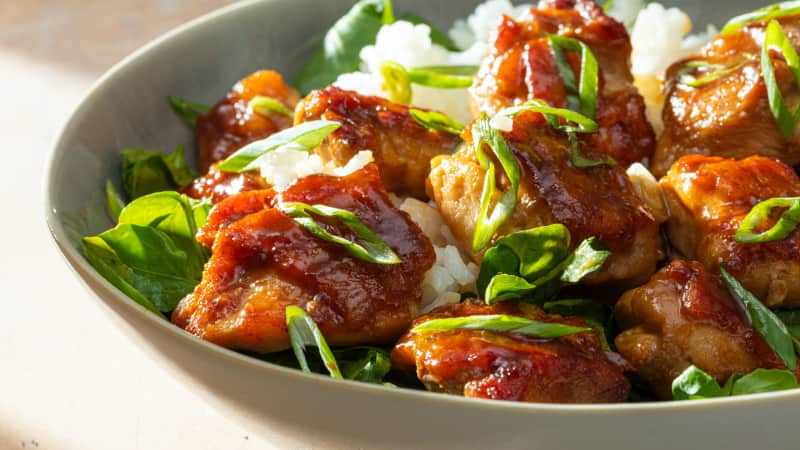I’ve never passed up a serving of chicken teriyaki, whether it was neatly arranged in a gleaming bento box at a Japanese American restaurant, charred on a backyard grill, or piled atop a disposable plate at a shopping mall food court. Because even when it’s not stellar, the salty-sweet, umami-packed chicken manages to hit most of the pleasure centers in my brain. But these versions aren’t much like the teriyaki that’s made in Japan.
“Teri” means “glaze,” and “yaki” means “seared.” Due to prohibitions on eating meat, the method was used on fish, not chicken, for most of the dish’s history. Japanese cooks would briefly sear yellowtail and then glaze it with a mixture of soy sauce, sake and/or mirin, and sugar. But when the emperor lifted those prohibitions in the second half of the 19th century, chicken teriyaki became an option, at least for those wealthy enough to buy or raise poultry.





